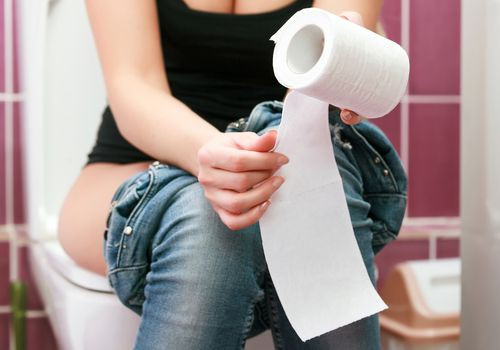Urinary Tract Infection Treatment: Early Experiments Show Chitosan Capable Of Stopping UTIs

It is mainly women who suffer from urinary tract infections (UTIs), which creates an urge to urinate (though not much comes out) and causes a burning sensation whenever a woman does pee. About one in five women who get UTIs will get another one, plus some women will get three — or more — UTIs in a year. Maybe it seems like a small thing, but don’t be fooled, repeat UTIs seriously impact a woman’s quality of life, especially her sex life, which often is the trigger for repeat infections.
For this reason, many people may herald a new study that shows how chitosan (a natural polysaccharide, often used as a dietary supplement), when given in conjunction with antibiotics, assists the bladder in ridding itself of bacteria that live in its deeper layers and potentially cause recurrent infections. The study, conducted only on mice and led by microbiologists at University of Utah, appears online in the journal, PLOS One.
Cause and Possible Fix
Generally, UTIs are caused by bacteria known as uropathogenic Escherichia coli (UPEC), which originate in the bowel but move into the urinary tract. Typically, doctors prescribe women antibiotics to treat individual urinary tract infections because UPEC are susceptible to antibiotics. Unfortunately, these bacteria also have the ability to permeate into deeper layers of cells and tissue where they lie dormant. In some cases, then, the UTI returns again and again because bacteria lodged in the inner layers of the bladder will hide, so to speak, from drugs that can kill them. "Antibiotics don't do a good job of getting rid of reservoir populations," Dr. Matthew Blango, a postdoctoral researcher. Home remedies also do little to fight these infections.
The researchers, including scientists from University of Ljubljana in Slovenia, decided to try chitosan (pronounced ky-ta-san), a Food and Drug Administration-approved substance, to try and kill reservoir populations of UPEC. The team began by infusing mouse bladders with chitosan for 20 minutes. In this time, the drug acted to exfoliate large cells lining the surface of the bladders. This exfoliation process caused dormant reservoirs of UPEC to rise to the surface of the bladder, where they were susceptible, once again, to antibiotics.
Next, the researchers gave the mice a one-week course of fluoroquinolones, an antibiotic class commonly used to treat UTIs. When they checked the level of UPEC in the mouse bladders one week later, the team found the reservoir populations of the bacteria almost entirely disappeared. "Effectively, there were no bacteria in the bladder," Blango said. Importantly, the mouse bladders also regenerated the surface lining of exfoliated cells in about a week.
Now large-scale trials using people, instead of mice, are needed to verify the effectiveness of chitosan, which is processed by removing the shells from shrimp, lobster, crabs, and other shellfish and then grinding them into a pulverous powder. If confirmed, chitosan might be used along with antibiotics to treat UTIs, which to this day are responsible for nearly 10 million doctor visits and 1.5 million hospitalizations each year in the U.S.
Source: Blango M, Ott EM, Erman A, Veranic P, Mulvey MA. Forced Resurgence and Targeting of Intracellular Uropathogenic Escherichia coli Reservoirs. PLoS One. 2014.
Published by Medicaldaily.com



























